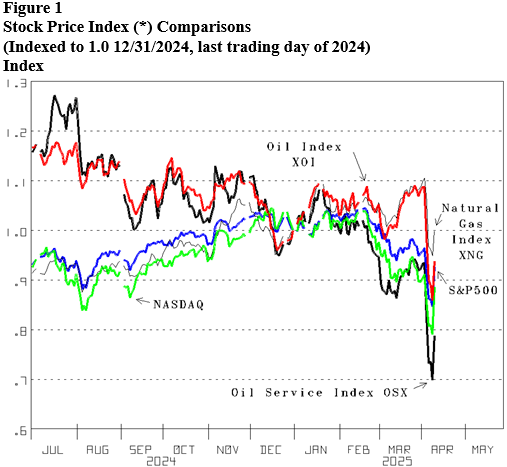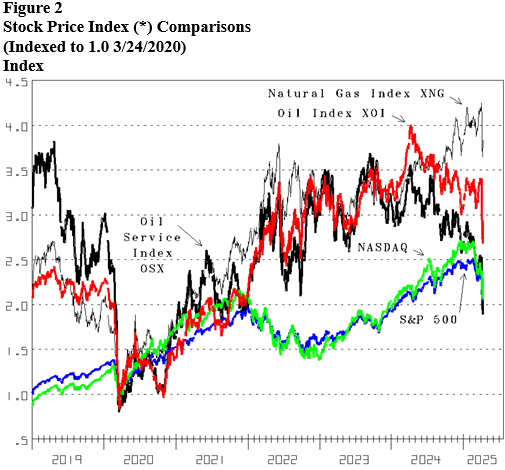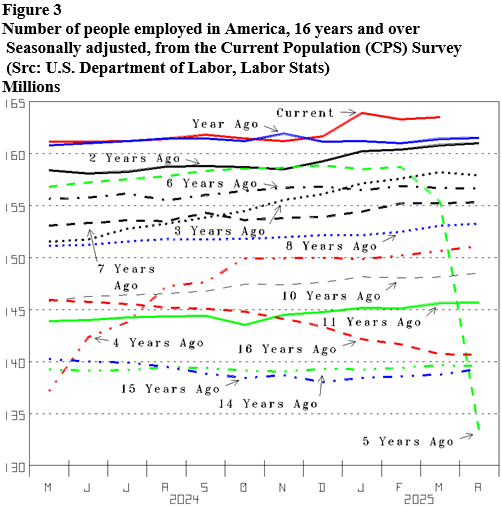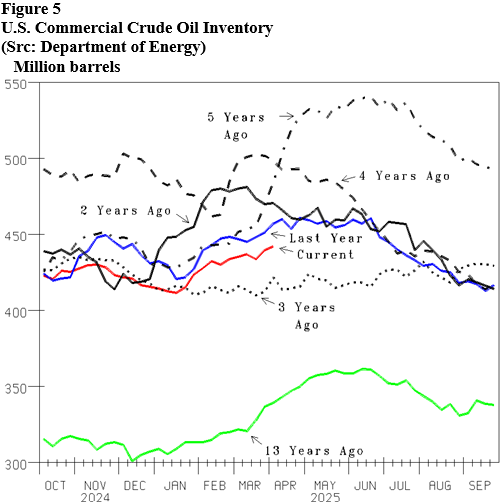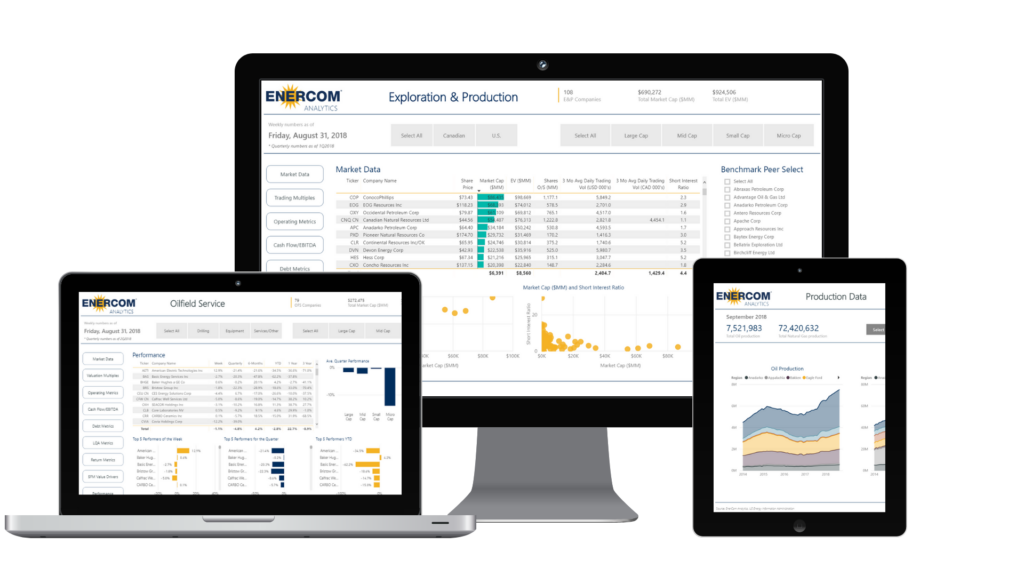(Oil & Gas 360) – While Recession Worry Is High, Stock Prices Suggest It Has Happened. Stock Prices & Data Also Indicate A Great Natural Gas & Oil Buy-Low Opportunity.

The S&P 500 dropping 1,312.39 (21.3%) and the NASDAQ dropping 5,420.55 (26.8%) from their highs sure looks like a recession has happened. Tariff tactics adding to fear and uncertainty had the S&P 500 (Figure 1, blue line) drop to a 4,835.04 intraday low Monday, down 1,312.39 (-21.3%) from its 6,147.43 intraday high February 29. The NASDAQ (green line) dropping to its 14,784.03 intraday low Monday is down 5,420.55 (-26.8%) from its 20,204.58 intraday high December 16, 2024. While the S&P 500 down 210 today is a big loss, 5,245 is up 8.5% from Monday’s low.
This stock market drop now looks like the drop with the Coronavirus Recession dictated back in 2020. Great, great fear of the Coronavirus around this time in 2020 had the S&P 500 (Figure 2, blue line) and the NASDAQ (red line) drop quickly and much. Energy stocks dropped much also (bold line, red line and line). Nevertheless, that big recession drop proved to be a very attractive Buy-Low opportunity.
Although tariff fear is a new and large fear, we credit very much needing to be done for no indication of a recession in U.S. employment data. Five years ago the Coronavirus Recession dropped U.S. employment 25.529 million (Figure 3, green dash). From 158.714 million in February of 2020 to 133.185 million that April. 7.895 million jobs were lost with Crash 2008, 145.908 million in May of 2008 (red dash) dropped to 138.013 million in December of 2009 (blue, dot-dot-dash). Last Friday’s report has 163.508 million employed last month (red line), 201,000 more than February. While both are down from January, they are up much from December.
The number of job openings, becoming employed and unemployed also show no signs of recession, yet. The Job Openings and Labor Turnover Report (JOLTS) released April 1st shows 7.658 million job openings in February (Figure 4, bold line). While that is down much from the post Coronavirus Recession jump and 104,000 fewer than January, it is up in economic growth territory and 246,000 more than June. 5.396 million hired in February (line) is 25,000 more than January and 308,000 more than June. And while the number unemployed is up much from the Coronavirus Recession rebound low (red line), 7.083 million in March is only 31,000 more than February and 14,000 fewer than July. Much needing to be done and notable job losses from new trends already happening (like working from home, repairing cars instead of buying new ones and continuing to live with Mom and Dad) have us continue to predict growth, UP, is the direction we head.
Crude oil inventory increasing has helped encourage bearish, recession thinking. U.S. crude oil inventory declining to multi-year lows in January (Figure 5, red line) helped tug the price of West Texas Intermediate (WTI) crude oil above $80 per barrel (Figure 9). Inventory increasing since encouraging uncertainty, recession fear and bearishness has dropped it towards $60 and the current month futures contract price below $60.
By oilandgas360.com contributor Michael Smolinksi with Energy Directions
The views expressed in this article are solely those of the author and do not necessarily reflect the opinions of Oil & Gas 360. Please consult with a professional before making any decisions based on the information provided here. The information presented in this article is not intended as financial advice. Contact Energy Directions for the full report. Please conduct your own research before making any investment decisions.

